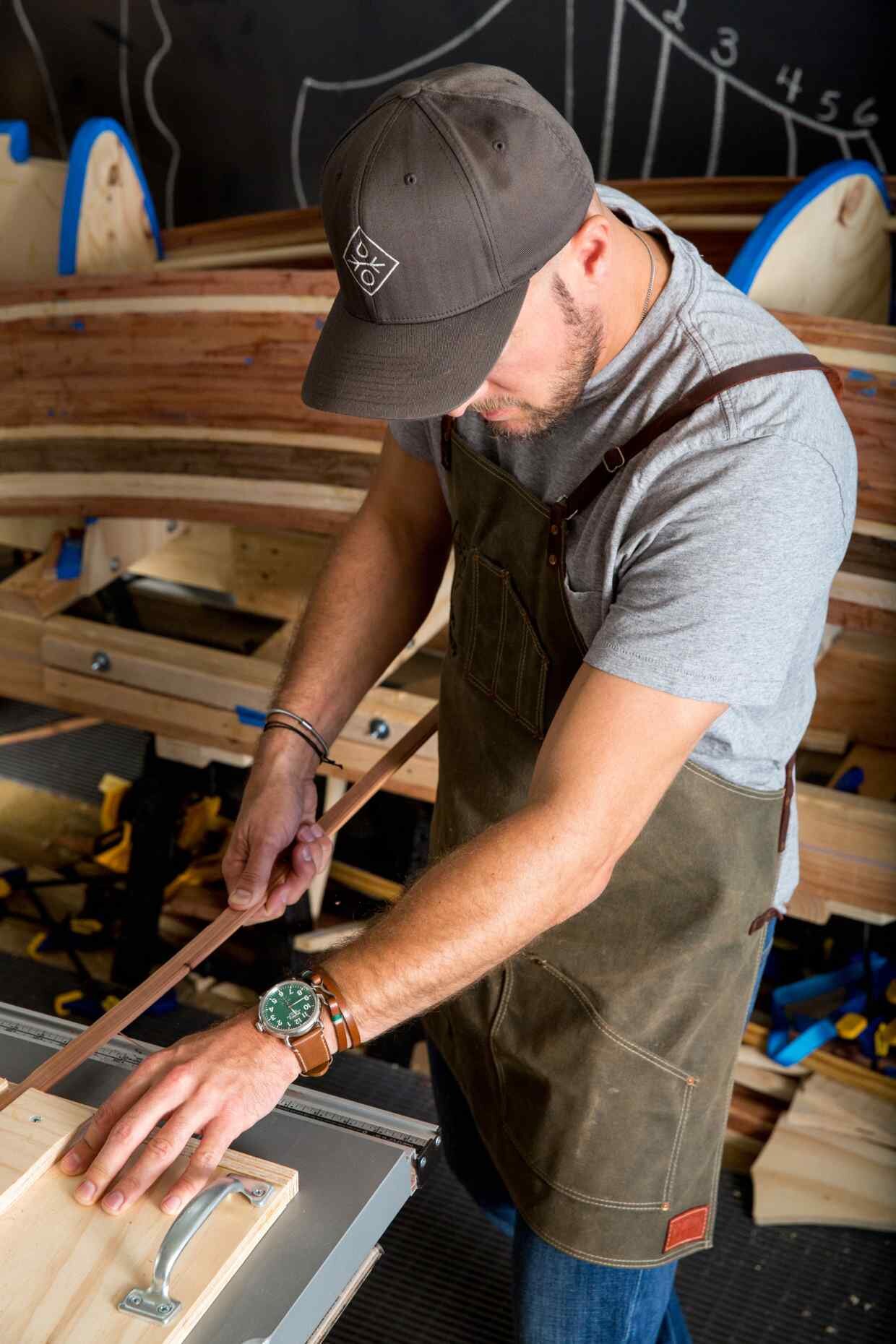Truly beautiful bespoke wooden canoes
Trent Preszler builds traditional boats layer by layer in Long Island
“This is a meditative art,” says artisan boat maker Trent Preszler. “I love that it takes so long to make canoes. It’s like the seasons of the year; everything happens in due time.” Indeed, each exquisitely handcrafted wooden vessel ($100,000) is slowly built up in hundreds of layers of different woods – from ash, cedar and walnut to zebrawood, purpleheart and ziricote – and takes around a year to complete in Preszler’s Long Island studio: a former blacksmith’s barn built in 1820.
Boatmaker Trent Preszler at work in his Long Island studio
But the wait does not deter Preszler’s clients, many of whom live in the nearby Hamptons, Canada or the Great Lakes, and patiently wait for the 0.5cm-thick wooden layers to be steam-bent and glued into the curved shape of the hull, before being further sanded and shaped. The canoe is then coated in fibreglass and epoxy to make it watertight, and finished with six coats of glossy marine varnish for a brilliant, streamlined sheen.
Each handcrafted canoe is built using hundreds of layers of different woods
The interior finishes are just as elegant as the exterior, with woven hemp and leather seats specially crafted by Jason Thigpen of Texas Heritage Woodworks, while solid bronze cutwaters, cast by Kristian Iglesias of Long Island’s Kai Design, add to the modern profile. So sleek and sculptural are the final results that it’s little wonder some clients have purchased them purely as works of art, but Preszler says this defeats the purpose. “I always tell people they have to paddle it, because that’s what it was intended for,” says the self-taught South Dakota native, who grew up surrounded by cattle, not kayaks, and is also the CEO of 100-acre vineyard Bedell Cellars. “It’s like owning a thoroughbred horse: you don’t want to leave it tied up in the stable all the time, you want it to run.”

